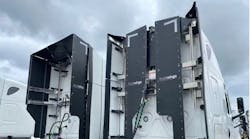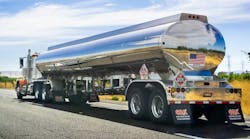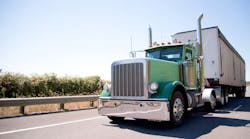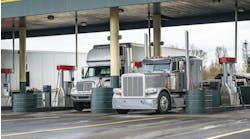In 2023, many fine FleetOwner contributors offered readers their expert opinions on the current trends and news in the trucking industry. The IdeaXchange column included news ranging from electrification to safety to truck parking. Our readers particularly favored articles about efficiency, CARB, safety, and, of course, prioritizing truck drivers. Read below for FleetOwner’s top 10 IdeaXchanges of 2023.
10. How aerodynamics can extend Class 8 EV range
Electric Class 8 vehicles have the potential to revolutionize the freight transportation industry, offering zero emissions and significant fuel savings for a cleaner and more sustainable future. However, range anxiety is one major obstacle hindering the widespread adoption of Class 8 electric trucks.
The range of an electric truck is influenced by various factors, including battery size, vehicle weight, and powertrain efficiency. Among these factors, aerodynamics plays a crucial role. Aerodynamic drag refers to the force that opposes the motion of a vehicle through the air. The greater the aerodynamic drag, the more power is required to overcome it, resulting in a shorter range. Read more…
9. Navigating the CARB prebuy for truck procurement: What fleets need to know
The U.S. Environmental Protection Agency (EPA) recently announced it approved California's plans to require an increasing number of zero-emission heavy-duty trucks as the state pushes to cut pollution through its California Air Resources Board (CARB). Gov. Gavin Newsome is expecting that half of all heavy-duty trucks sold in the state will be electric by 2035.
Under the new rules, only zero-emission medium- and heavy-duty trucks would be available for sale in California starting with the 2040 model year. Commercial fleets of 50 or more vehicles, or fleets that generate more than $50 million in gross revenue, any new truck purchased after Jan. 1, 2024, must be zero emissions. Read more…
8. Roeth: We're not done improving diesel efficiency
When a technology has been around for a long time, it is more challenging to make sweeping improvements. But that doesn't mean it can't be improved. You just have to look at diesel-powered trucks and the SuperTruck program to see that it is possible to improve an existing technology.
If you are unfamiliar with the SuperTruck program, it is a public-private partnership between the Department of Energy and truck makers. With SuperTruck 2, the DOE asked OEMs to achieve a 100% improvement in freight efficiency over their 2009 baseline numbers. Read more…
7. What will a national EV charging system look like?
We are more than a year and a half into the Infrastructure Investment and Jobs Act, which was signed into law by President Biden in November 2021. Under the IIJA, the National Electric Vehicle Infrastructure Formula Program (known as the NEVI Program) was established to distribute $5 billion in funding over five years to build out a national network of electric vehicle charging stations along designated Alternative Fuel Corridors.
Individual state departments of transportation have developed plans to administer funding at the state level. With so many states and various stakeholders, how will the NEVI program help the Biden Administration achieve its goal of building a national network of 500,000 EV chargers along 75,000 miles of U.S. highways, and how far along are we? Read more…
6. Gaskins: Diesel is part of a clean future
With all the talk about zero-emission vehicles, I think the industry may have lost focus on what's happening with diesel trucks. According to a recent Diesel Technology Forum report, the use of near-zero emission trucks increased by 10.2% from 2021 to 2022. To be clear, these are not zero-emission trucks but diesel trucks with diesel particulate filters and selective catalytic reduction systems that cut down on the emissions from the tailpipe.
Nearly two-thirds of all Class 3 to 8 diesel trucks operating today are model year 2007 or newer, and they are much cleaner than pre-2007 trucks. In addition, many fleets are investing significantly in technologies like aerodynamic devices for tractors and trailers, low-rolling resistance tires, tire pressure monitoring systems, automated manual transmissions, and more. They are also making some operational changes, such as setting electronic engine parameters to optimize fuel economy, limiting speed, and teaching drivers to drive with fuel economy in mind. These investments and practices mean that fleets are going more miles on a gallon of gas, and that means they are using less fuel to move goods. Read more…
5. Clark: Now’s the time to prepare for 2027 capital expenditures
While 2027 may seem far away, it really isn’t when you look at planning for your capital expenditures. Speaking at a recent NationaLease meeting, Ken Davis, founder of Greentree Advisors, said that inflation and regulations will impact capital expenditures over the next several years.
After 2027, regulatory changes will require fleets to make substantial changes to the vehicles they buy and maintain. Davis said that capital planning is going to be essential for not only vehicles but also service infrastructure and fueling/charging. Read more…
4. 'Penalty flags' are flying at FMCSA
Football referees might not be throwing penalty flags now that the season is over, but “flags” are flying at the Federal Motor Carrier Safety Administration. The agency is “flagging” motor carriers that have not updated their MCS-150 forms within the past two years. Those motor carriers will receive closer scrutiny from the federal government and its law enforcement partners. Closer scrutiny is not always a good thing.
FMCSA requires interstate motor carriers to file Form MCS-150 titled, “Motor Carrier Identification Report,” or form MCS-150B titled, “Combined Motor Carrier Identification Report and HM Permit Applications.” The same requirement applies to international carriers and to intrastate motor carriers which haul hazardous materials. Carriers must update the form at least every two years at a minimum. Read more…
3. What steps are you taking to ensure fleet safety?
In order to operate a safe fleet, it requires the entire organization to make its commitment to safety a top priority. I don't think there is a trucking company out there that would say that safety doesn’t matter. However, saying safety is important and then taking steps to act on making the fleet safe are two different things. Sometimes in the hustle and bustle of daily operations, safety does not get the attention it deserves.
Fleets that want to truly live up to their commitment to safety must take steps in a variety of areas. Read more…
2. New year's resolution: Listen to drivers
When I was with the California Highway Patrol, we would meet regularly with local trucking companies. One company fleet manager always had the biggest smile on his face.
“You seem chipper,” I said to him once. “Something good happen?”
“I listened to my drivers,” he replied, still smiling. Read more…
1. It’s time to weigh in on the truck parking problem
We all know that truck parking is a problem. Drive down any U.S. highway and you will undoubtedly see trucks parked on the side of the road, on entrance and exit ramps, on access roads to rest facilities, etc. The simple fact is there are not enough parking spaces for the number of drivers that need to take their mandatory Hours of Service breaks.
How bad is the problem? For the third year in a row, truck parking was the No. 1 concern of truck drivers, according to the American Transportation Research Institute’s (ATRI) annual Critical Issues in the Trucking Industry study. Read more…













